It’s back! And it sure is pointy. The 2021 Hyundai Elantra, which we briefly sampled last summer, has returned for a full-blown evaluation. The completely redesigned compact, now in its seventh generation, has arrived in a market that has grown almost hostile to small, four-door sedans. American car companies have abandoned them altogether, with Ford most recently replacing its entry with a truck. Hyundai, on the other hand, is betting that its overhauled compact will have a better shot at standing out in the shrinking sedan market thanks to its advanced tech, front-running efficiency, and (literally) sharp new styling.
So, this really isn’t a question of whether the Elantra will keep people out of Konas or Tucsons or even that new Maverick, but whether it will keep them out of Civics or Sentras or Corollas or Jettas or Mazda3s or Imprezas or, well, normally we’d say “you get the point” but we’ve effectively exhausted the entire list.
Hyundai chose to go after the Corolla/Civic model, offering the Elantra in gasoline, hybrid and enthusiast variants, eschewing the Mazda’s premium aspirations and the Subaru’s standard all-wheel drive. We’ll be reviewing the new 50-mpg Elantra hybrid soon and the 201-horsepower Elantra N-Line eventually; and a full-blown N model with 275 horsepower is on the way too, but probably not until 2022 at the earliest.
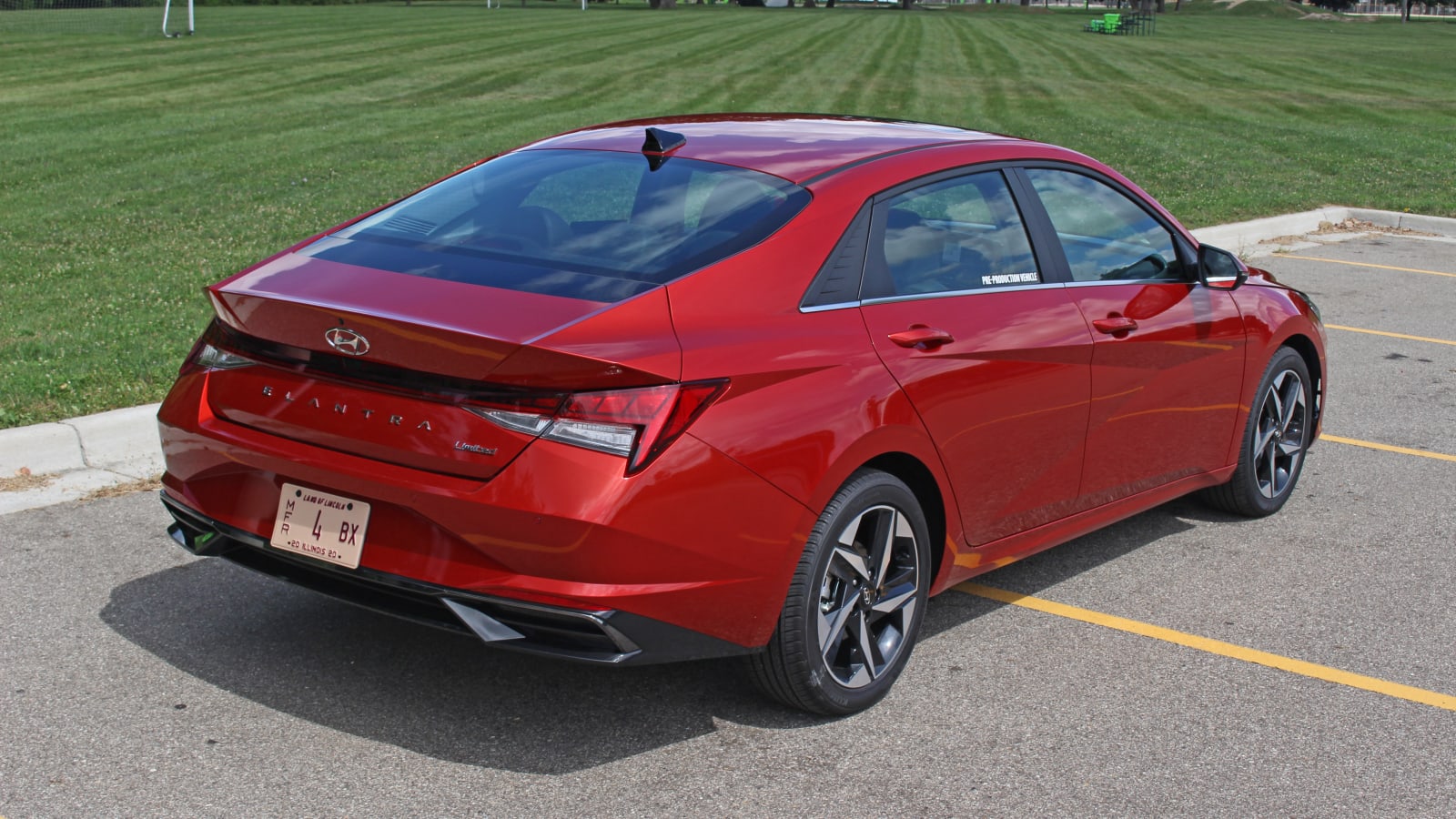
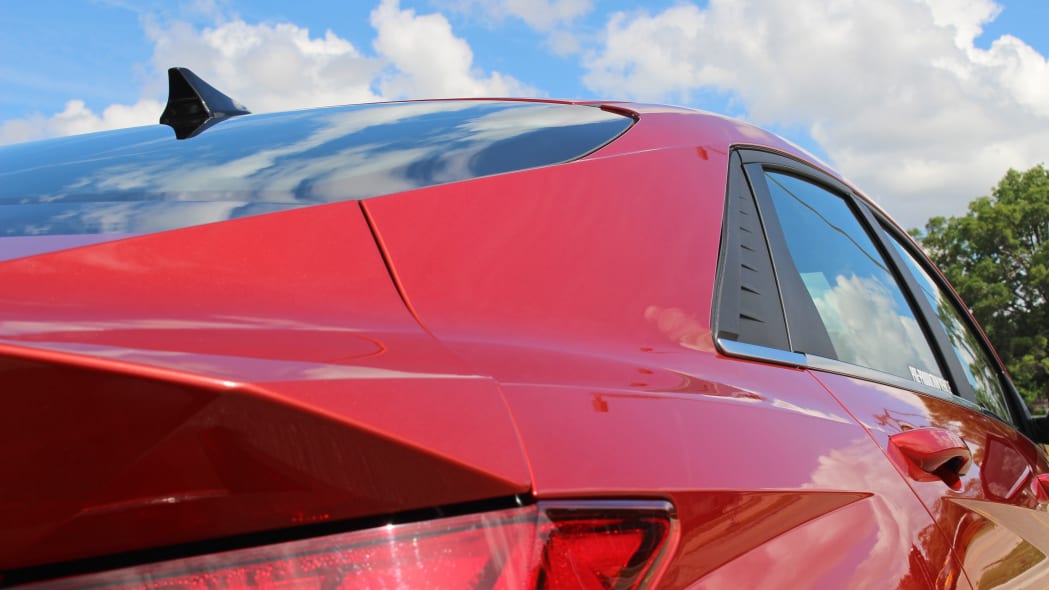

Today, we are focused on our loaner, which was a Limited model with the standard 2.0-liter inline-four making 147 horsepower and 132 lb.-ft. of torque that’s paired to Hyundai’s revised CVT (hybrid, weirdly, is the version with a conventional automatic). Fuel economy comes in at 33 mpg city, 43 mpg highway and 37 mpg combined for the SE model; the SEL and Limited are rated at 31/41/35. We averaged just over 38 mpg during a 60-mile city/highway test loop.
This base engine is nothing exciting, to be sure, but it’s pretty typical for the compact segment. It’s plenty for daily use, though we’d like a bit more off-idle enthusiasm, especially in the default drive mode. Dialing it up to “Sport” helps a bit, but also exaggerates the rubber-band sensation you sometimes get going on/off the throttle with a CVT.
Unlike the other Elantras, which are fitted with an independent rear suspension, the gasoline variants are stuck with a twist-beam rear setup. Fortunately, the Elantra’s wheelbase is on the long-ish side for a compact, so the twist-beam setup isn’t a huge impediment. The ride is smooth and comfortable, but not sporty. Sure, you can throw it into a corner if that’s what you feel like doing, but you won’t get much feedback from the Elantra’s helm.
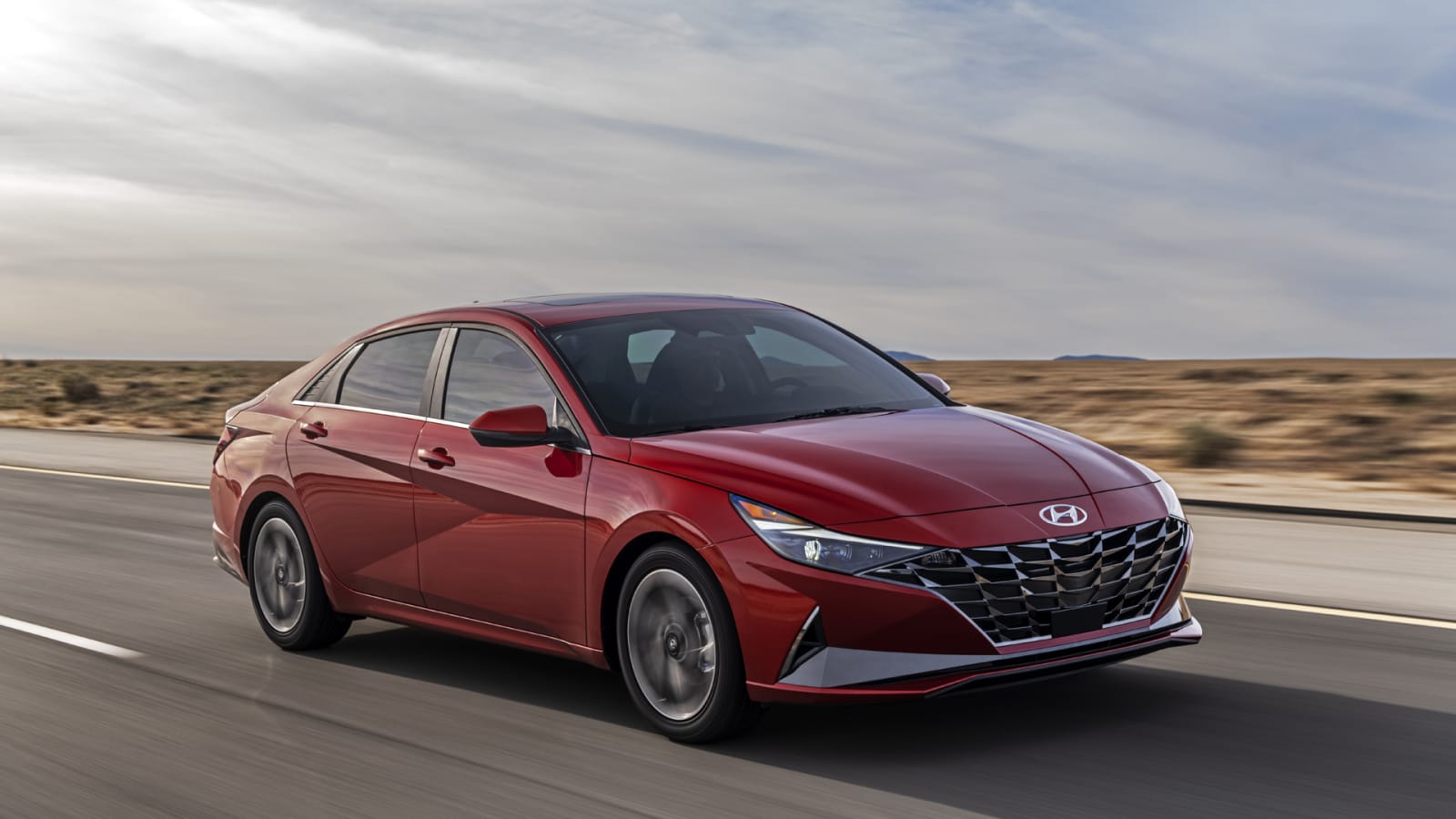
Back when things were a lot less steamy here in Michigan, we learned this the exciting way when a shaded patch of freeway ice mid-curve resulted in an instantaneous and complete loss of traction at all four corners that was not communicated up the mechanical chain. The lazy drift of the rear end and the jostle of rubber catching on concrete afterward were the only signs that anything had even been amiss.
If this were a sports car, that would be damning criticism, but for a compact sedan that can practically drive itself, it’s not make-or-break. And speaking of driving itself, the Elantra’s tech suite is impressive. The (on-by-default) Highway Drive Assist system seems both effective and fairly reliable. It struggled less than even our long-term Volvo S60 upon encountering damaged or worn pavement markings and construction zones. It’s also conveniently disabled with a thumb click, as the toggle is right on the steering wheel.
Every ’21 Elantra also gets forward collision warning with pedestrian and cyclist detection, automatic emergency braking, lane-keeping assist, automatic high beams and a driver inattention warning system. In addition to the aforementioned Highway Drive Assist feature, our Limited was also equipped with park assist with reverse automatic braking, blind spot monitoring with emergency steering assist, rear cross-traffic warning with automatic emergency braking, and adaptive cruise control (naturally). As in other Hyundais, these features all work quite well.
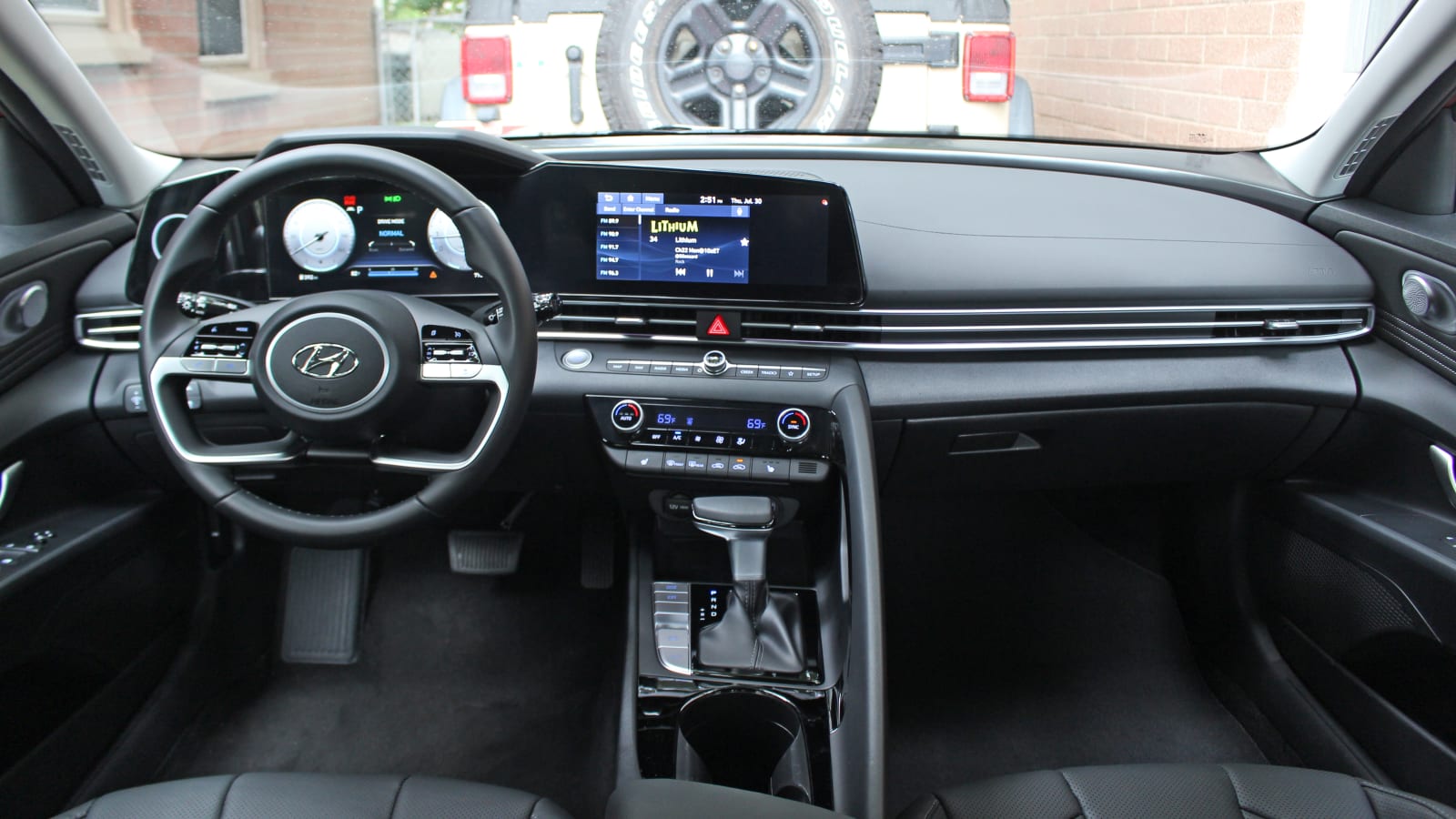
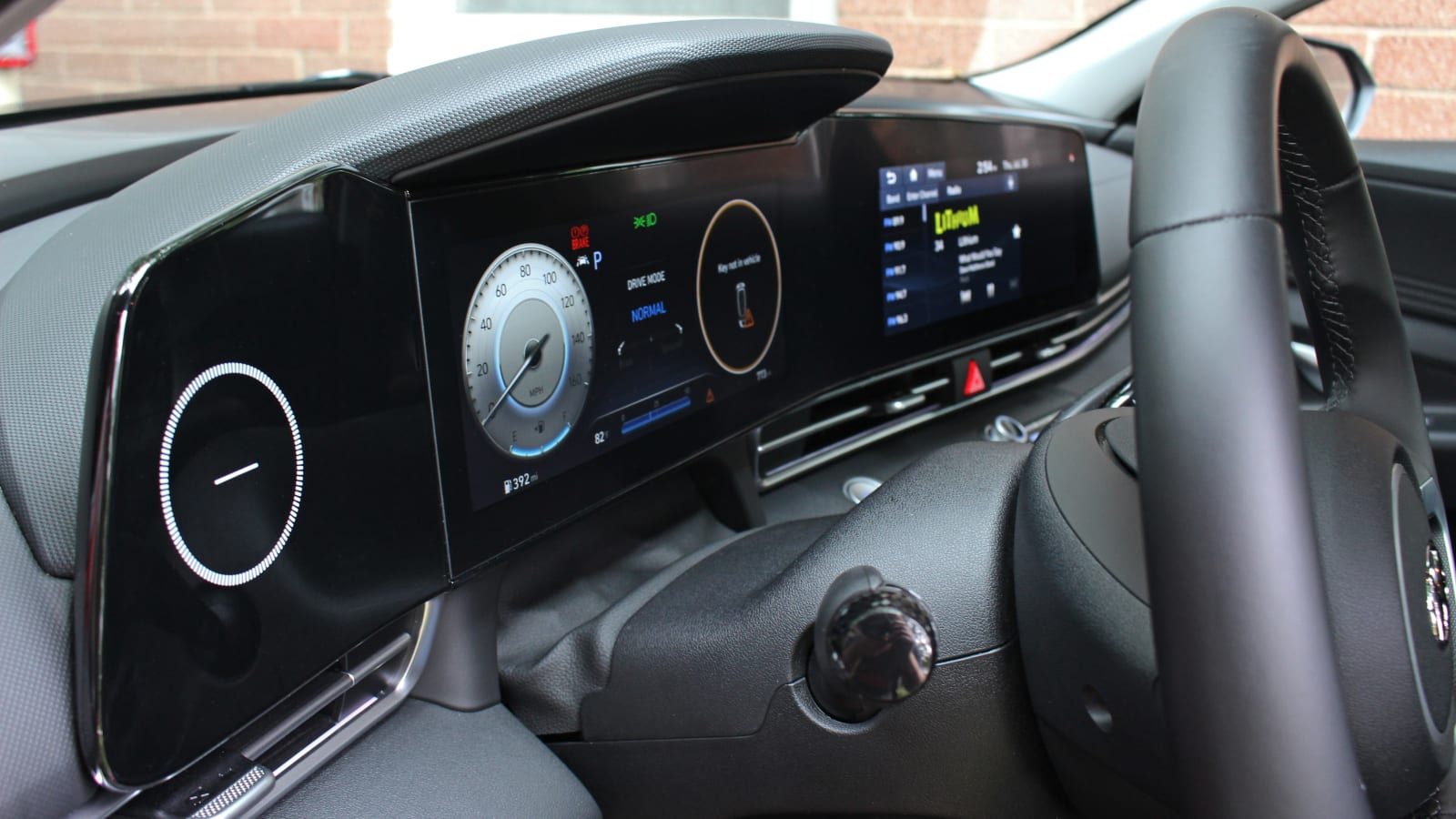
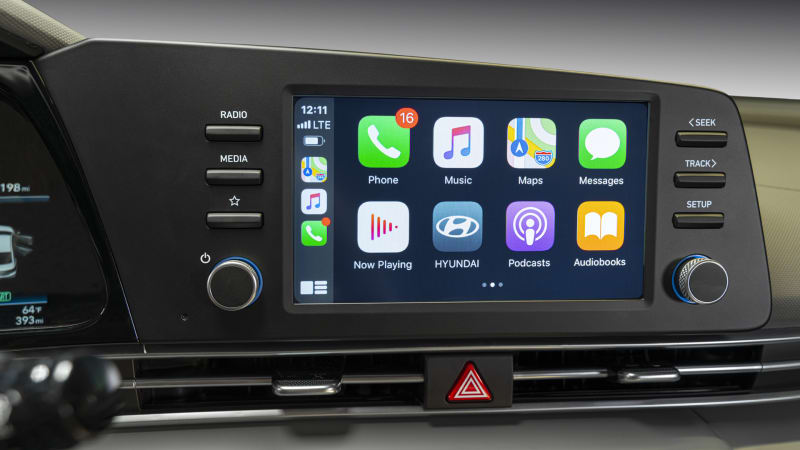
We went over quite a bit of the Elantra’s cabin when we had access to a late-stage development prototype last summer, but the final, buttoned-up version is even more impressive. Sure, the little mystical rune of power on the left side of the dash is still just a piece of plastic with no function whatsoever, and the grab-handle is a little silly for what amounts to a commuter car, but the material choices and build quality both impress. The fabric inserts in the door panels are especially nice touches.
The 10.25-inch touchscreen infotainment system is solid too. It’s large, versatile, customizable and quite intuitive to use. It also makes use of physical buttons for critical functions, including system power, volume and climate control (right down to the heated seats; sadly the wheel gets no such treatment). It also responds nicely to voice commands, tuning obediently to requested stations and finding requested destinations (address or otherwise) without any fuss.
In fact, we only have one real complaint. Unlike the base 8-inch unit, this nav-equipped system is incompatible with wireless Android Auto and Apple CarPlay. While wired integration is fully supported, you’ll have to wait at least a model year or two to get both with the larger screen; it’s simply a matter of the feature not being supported by the hardware that powers the 10.25-inch unit. The wireless charging cradle, meanwhile, works flawlessly, even if it’s completely redundant for those who plan to plug in for Apple/Android connectivity. If nothing else, it’s handy for passengers.
All in, the 2021 Elantra is a solid package with no glaring drawbacks for the average sedan buyer. Is it as big of an improvement over the outgoing Elantra as the new Nissan Sentra is over the old? Absolutely not, but that’s more of an indictment of just how sad Nissan’s compact offering became. Is it more revolutionary than the new Honda Civic? Absolutely, and although we can’t say it’s better than its principal competitor, the new Elantra is without a doubt closer than it was before.
Related Video:

